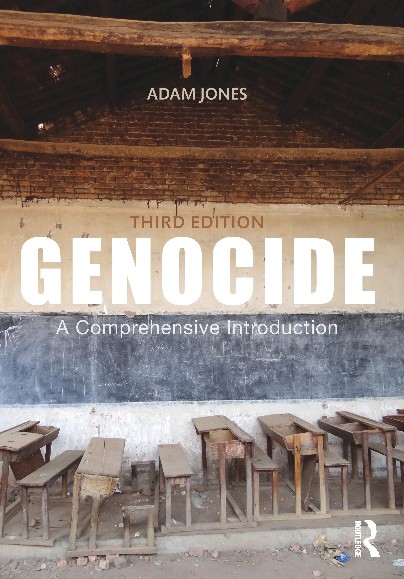 |
| "German and Turkish officers pose with the skulls of Armenian victims." |
By Robert Fisk
The Independent, October 21, 2012
"The photograph -- never published before -- was apparently taken in the summer of 1915. Human skulls are scattered over the earth. They are all that remain of a handful of Armenians slaughtered by the Ottoman Turks during the First World War. Behind the skulls, posing for the camera, are three Turkish officers in tall, soft hats and a man, on the far right, who is dressed in Kurdish clothes. But the two other men are Germans, both dressed in the military flat caps, belts and tunics of the Kaiserreichsheer, the Imperial German Army. It is an atrocity snapshot -- just like those pictures the Nazis took of their soldiers posing before Jewish Holocaust victims a quarter of a century later. Did the Germans participate in the mass killing of Christian Armenians in 1915? This is not the first photograph of its kind; yet hitherto the Germans have been largely absolved of crimes against humanity during the first holocaust of the 20th century. German diplomats in Turkish provinces during the First World War recorded the forced deportations and mass killing of a million and a half Armenian civilians with both horror and denunciation of the Ottoman Turks, calling the Turkish militia-killers 'scum'. German parliamentarians condemned the slaughter in the Reichstag. Indeed, a German army medical officer, Armin Wegner, risked his life to take harrowing photographs of dying and dead Armenians during the genocide. In 1933, Wegner pleaded with Hitler on behalf of German Jews, asking what would become of Germany if he continued his persecution. He was arrested and tortured by the Gestapo and is today recognised at the Yad Vashem Jewish Holocaust memorial in Israel; some of his ashes are buried at the Armenian Genocide Museum in the capital, Yerevan. It is this same Armenian institution and its energetic director, Hayk Demoyan, which discovered this latest photograph.
It was found with other pictures of Turks standing beside skulls, the photographs attached to a long-lost survivor's testimony. All appear to have been taken at a location identified as 'Yerznka' -- the town of Erzinjan, many of whose inhabitants were murdered on the road to Erzerum. Erzinjan was briefly captured by Russian General Nikolai Yudenich from the Turkish 3rd Army in June of 1916, and Armenians fighting on the Russian side were able to gather much photographic and documentary evidence of the genocide against their people the previous year. Russian newspapers -- also archived at the Yerevan museum – printed graphic photographs of the killing fields. Then the Russians were forced to withdraw. Wegner took many photographs at the end of the deportation trail in what is now northern Syria, where tens of thousands of Armenians died of cholera and dysentery in primitive concentration camps. However, the museum in Yerevan has recently uncovered more photos taken in Rakka and Ras al-Ayn, apparently in secret by Armenian survivors. One picture -- captioned in Armenian, 'A caravan of Armenian refugees at Ras al-Ayn' – shows tents and refugees. The photograph seems to have been shot from a balcony overlooking the camp. Another, captioned in German 'Armenian camp in Rakka', may have been taken by one of Wegner's military colleagues, showing a number of men and women among drab-looking tents. Alas, almost all those Armenians who survived the 1915 death marches to Ras al-Ayn and Rakka were executed the following year when the Turkish-Ottoman genocide caught up with them. [...]"














The first 20th Century genocide was committed by Germans in Africa.
ReplyDeletehttp://www.dailymail.co.uk/news/article-1138299/The-Holocaust-Horrifying-secrets-Germanys-earliest-genocide-inside-Africas-Forbidden-Zone.html
I would like to know more about Germany's role in Armenian Genocide.
Papken
I think you can find some information in German sources. But it is not what colonialism is about? For me it looks like a routine raid of the Russian Military in the Northern Caucasus.
ReplyDeleteTurks are reluctant in admitting that atrocities perpetrated against Armenian is genocide, and I can't see that Turkish government will accept that in near future.
ReplyDeleteBUT, something else attracts my attention regarding wester scholars view of that particular times, especially time of First and Second Balkan War.
Serbs and Bulgarian, as well as Greeks to some extent, perpetrated mass killings and expulsion of Muslims which they regarded as Turks therefore mortal enemies, but regardless of their ethnicity which was in most of the cases individuals of their own ethnic background converted to Islam (ie Serbs-Muslims, Bulgarians-Muslim, Albanians-Muslim, even Greeks-Muslim).
Bosnian Muslims survived that particular genocide, or should we say at least ethnic cleansing, thanks to tha fact that Bosnia was under the Austro-Hungarian protectorate, but as soon as Serbia took over newly formed state Kingdom of Yugoslavia, Bosnians-Muslim suffered similar faith as all other Muslims around Serbia, Kosova, Montenegro, Bulgaria and Greece just few decades earlier. Kingdom of Yugoslavia and Belgrade government tore apart Bosnia, expelling few hundred thousand Bosnian Muslims to Turkey.
Description of these events are hard to find in any western history books or scholarly works.
I don't know if you ever dealt with these events, maybe there is some in it more then just story and fading memory.
As always, thank you for your hard work essential for all the victims, and cheers from Sarajevo !